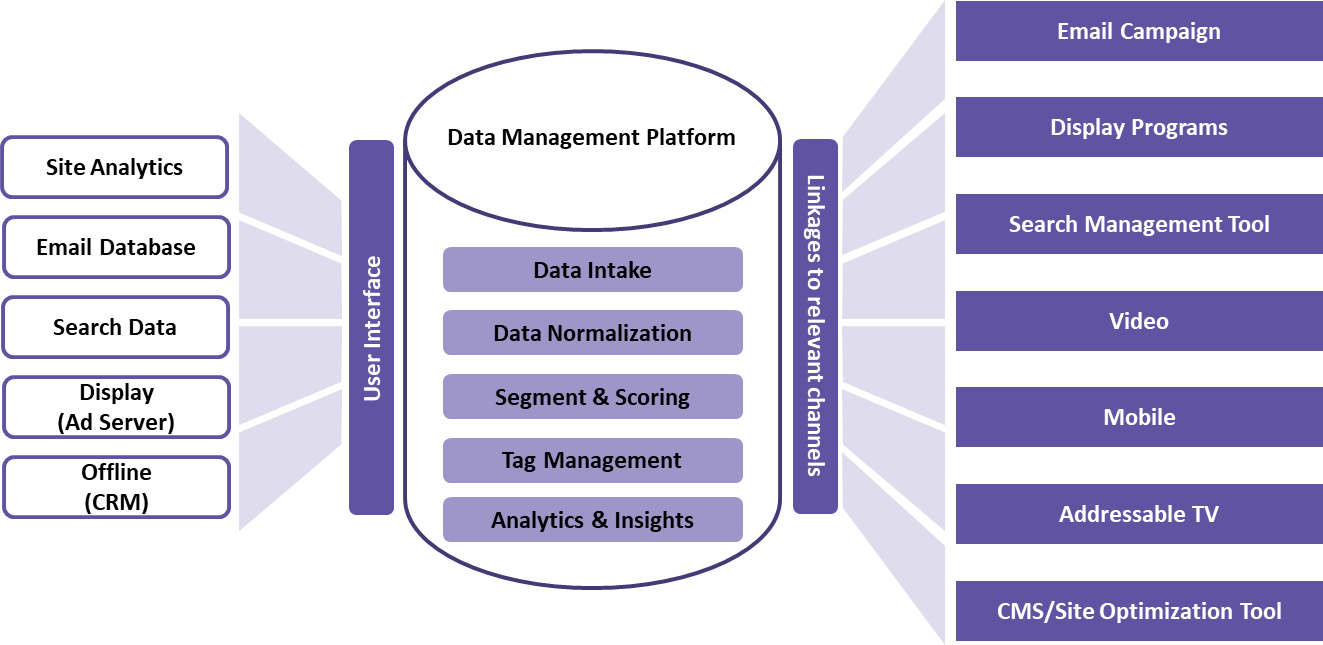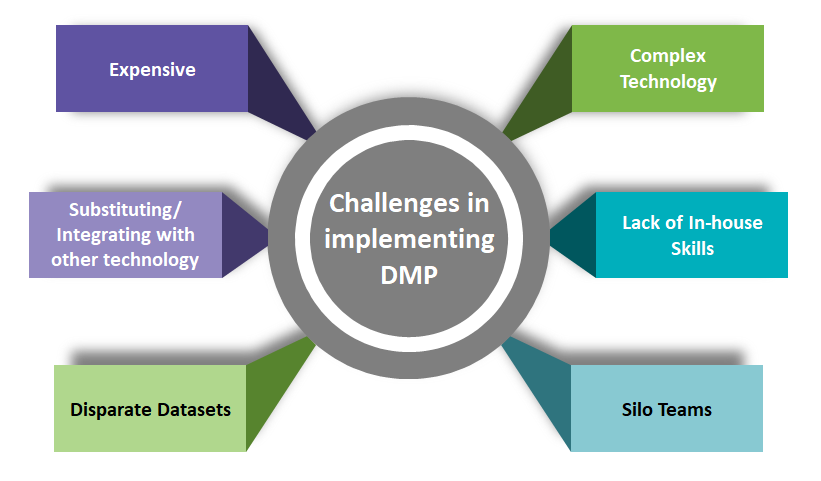
Choosing the right DMP to effectively utilize Consumer Data


Abstract
Companies invest in securing exhaustive data (first, second, and third party) on shoppers and potential future shoppers to drive customized marketing communication that is more effective in converting a customer-brand interaction to a sale. Companies adopt different methodologies for data collection based on level of privacy, sources, and complexity of the data.
Consumer data sourced from multiple entities are used to create a set of internal consumer datasets based on their demographics and psychographics. However, extracting meaningful insights out of data collected from multiple touch points was a key challenge for the majority of companies across industries due to differences involved in each dataset. To overcome this challenge, Data Management Platforms (DMPs) that unify all the data have been utilized by companies. This has enabled marketers to understand the actual data available and to effectively target and retarget desired audience. Currently, there are numerous DMP providers in the market and this creates confusion for buyers as to who to partner with. Oftentimes many buyers end up choosing a DMP that is not their best fit, which results in waste of considerable marketing spend.
This article presents a perspective on the three types of data (first, second, and third party), the importance of DMP in leveraging data in a unified approach, and how efficiently can the best DMP be procured to enhance creation and execution of marketing campaigns.
Introduction to DMP:
A DMP is a centralized data management platform that allows the user to create target audiences based on a combination of in-depth first- and third-party audience data. It helps in accurately targeting campaigns to these audiences across third-party ad networks and exchanges. It also helps them accurately measure which campaigns performed the best across segments and channels to refine media buys and ad creative over time.

Benefits of DMP:
|
Target the precise audience |
DMP enables publishers to receive audiences of first-party data from marketers—in a privacy compliant way—provided that the marketer is on the same platform. The publisher can then target the precise audience the marketer is interested in. |
|
Segment Audience Data |
Marketers can effectively segment and analyse their target audiences by analysing first-party data sourced from their own touch points as well as third-party data sourced from external agencies. By analysing visitor data (industry, interests, purchase history, etc.), marketers can develop audience segments and sell those segments to advertisers or other media buyers, enabling them to target consumers that fall under each segment category. |
|
Understand audience |
A good DMP comes with preloaded third-party data. These data can be used to unlock insights about consumers that could increase the value of those impressions. |
|
Reduces Waste |
Marketers can use the DMP tool to identify audiences with the same demographics sourced from multiple touch points and avoid repetitive data, resulting in a more efficient budget allocation among media and data vendors. |
|
Data security |
DMP vendors offer data protection enabling publishers to monitor potential data leakage. |
|
Personalization |
DMP can be used to personalize a client’s website and the subscription sign-up flow. |
|
Audience Analytics |
The third-party data in the DMP can be used to better understand what type of users drive their most popular content. |
Challenges in implementing a Data Management Platform (DMP):
The major challenges that buyers face while trying to implement DMP in their organization are as follows:

Cost Saving Opportunities:
|
Flat Rate Fee: DMP buyers who have a fixed target of impressions can realize cost savings by sourcing DMP on a flat-rate fee. This helps them in paying a flat fee agreed upon based on unique number of impressions passing through the platform. |
Longer Contract Duration: Owing to the importance of DMP in the digital marketing space, having a long-term contract with the DMP vendor would help the buyer to save costs over having multiple short-term contracts. |
Sourcing in Stack: DMP supply base offers multiple interrelated services. Buyers source multiple services in stack from the same vendor and can negotiate at a better price than sourcing multiple services at a higher price from different vendors. |
Global sourcing: DMP is a region-agnostic service. Therefore, sourcing DMP at a global level from the same vendor would help the client in negotiating with the vendor for an attractive price. |
Overview of Major Vendors and their Key Capabilities:
Adform, Adobe, KBM Group, Lotame, MediaMath, Neustar, Nielsen, Oracle, Salesforce, and Turn are the major suppliers offering Data Management Platforms. The following table captures the key capabilities of these suppliers.
| Salesforce |
Salesforce DMP has strong capabilities in the following: segment creation and management, data security and leakage prevention, flexibility and usability of the user interface, privacy capabilities, cost, and overall flexibility. |
|
Adobe |
Adobe integrates its advertising technology offerings with marketing technology offerings and delivers a unified view of audiences to targeting and personalization platforms—website, search, and display. |
|
Media Math |
Strong real-time media execution; open interoperability with data, media, and technology providers, Omni channel integrations, and insights from processing data from volumes of interactions are Media Math’s key strengths. |
|
Nielsen |
Nielsen provides a single view of customers across all channels. It provides access to client’s first-party data as well as its own audience data and develops detailed insights across various consumer attributes. |
|
Oracle |
Oracle aspires to become a one-stop-solution provider for managing customer data and have started acquiring many niche suppliers operating in the allied space, which gives it an edge over others in the service portfolio. |
|
Neustar |
Neustar’s integrated marketing solution gives marketers a complete and real-time portrait of their customers and prospects based on accurate data, thereby facilitating a personalized customer-brand dialogue across all marketing channels |
|
Lotame |
Lotame remains independent, which contributes to its agility and level of personal service. Lotame offers the most widely used, trusted, and comprehensive data exchange in the industry. |
|
KBM Group |
KBM, part of the WPP group offers a cost-effective, no-frills service that is built on a legacy of data assets. |
|
Adform |
Adform has a strong set of third-party data and martech integrations, and facilitates coordination to utilize buckets of siloed data. |
|
Turn |
Turn’s unique data querying option really differentiates it from others in the space, while Turn’s customer journey analytics make it a good choice for e-retailers. |
Conclusion:
Marketers are increasingly relying on data to create insight-based marketing and evaluate the effectiveness of marketing efforts.
This is giving rise to the usage of DMP in the media space. With many vendors offering innovative DMP solutions that address the evolving needs of the buyers, there is widespread confusion when choosing the DMP. Buyers can eliminate this confusion by conducting a clear analysis of their requirements and reviewing the benefits, and key differentiating factors as discussed above.
Related Insights:
View All
Get more stories like this
Subscirbe for more news,updates and insights from Beroe






